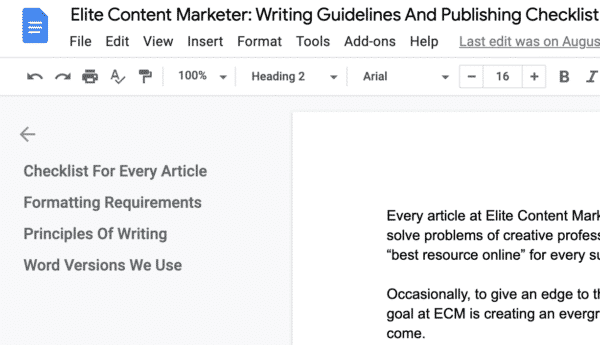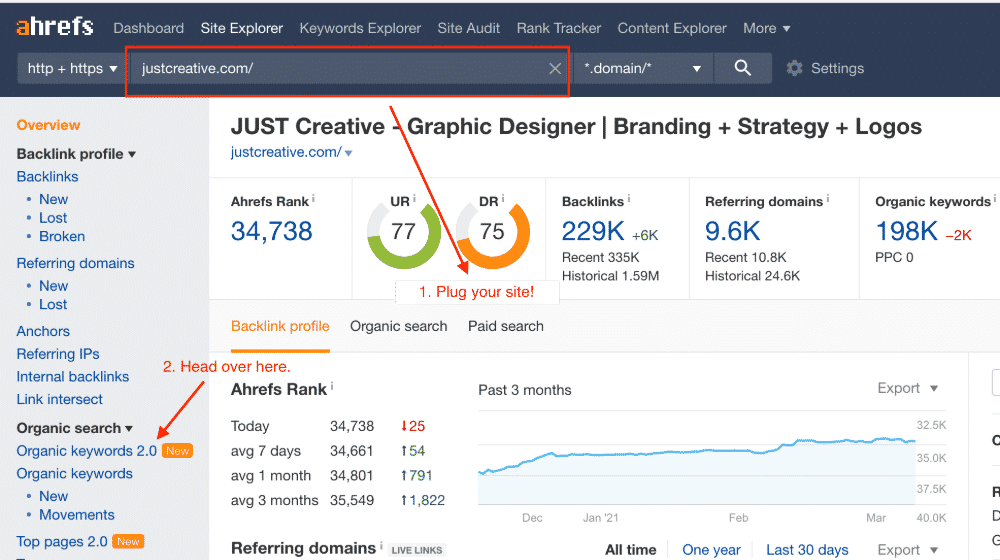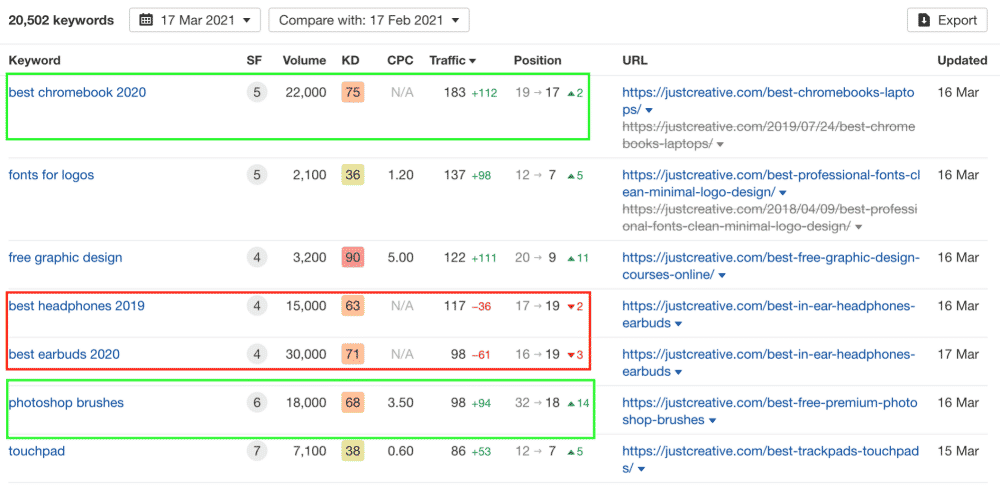This article has been contributed by Chintan.
Long-form content is all the rage in the world of content marketing, and for good reason. It tends to earn more links, shares, and organic traffic than short-form pieces.

Long-form works mainly because putting together such in-depth articles requires effort. Researching, compiling relevant ideas, taking screenshots, and writing the article is time-consuming.
However, the final product turns out to be a highly credible source of information for your audience.
Orbit Media research confirms that the amount of time business bloggers spent writing a blog post has seen an upward trend over the last six years.
How Can You Scale Long-Form Content for Your Website?
What if you’re a company that wants to produce more long-form content creation?
You’ll need to onboard a team of proficient writers and create systems and processes to ensure quality. Here are five steps to get you started with scaling content.
Step 1. Set A Budget
Content creation is the number one outsourced content marketing activity as per the Content Marketing Institute’s (CMI) 2021 Benchmark Report For B2B Organizations.
Scaling content is also better done with outside help, especially if you want to scale long-form content. You can have a content manager liaise with freelance writers and an editor to do quality checks and upload final drafts.
Setting a Content Outsourcing Budget
Let us help you set your outsourcing budget for content creation…
The normal word count for a long-form article tends to be around 2000 to 2500 words. For output of 10k words a week (which comes to about four to five such articles), long-form content creation can quickly get expensive.
You might find “decent” beginner writers at 5 cents a word from job boards like ProBlogger all the way to professionals charging ten times that amount. Assuming around 2000 words in a long-form piece, the budget ranges from $100 to $1000.
In the lower range, expect to spend more time training and editing for quality. But as the price for creating one article increases, it might stop making business sense.
If you pay 10 cents a word and promise long-term and consistent work, then you’ll most likely find some great writers. The budget for getting an output of about five long-form pieces a week comes to around $1000 per week.
Realistically you might need to spend at least 50% more to ensure that your content pipeline is always filled.
Most high-quality writers max out at about 2000 words a day, so don’t expect more than two articles a week from them. Onboard at least three (or even four) writers when you think two will do.
You also need to factor in your in-house team’s time to manage and run the project. Additionally, there’s a cost for competitor research and project management tools.
Word Count and Original Graphics
Some keywords require content going as much as 10k words of depth. Either schedule padding in your editorial calendar or assume a standard of 2500 words for every article.
You can always update the content (which is an essential step that we’ll discuss later) as an article starts picking up momentum in search engines.
Similarly, having a dedicated graphic designer in your team (to create original graphics) could assist in boosting your brand identity and make them stand out. But it will cost you additional time and money – potentially lowering your output.
Depending on your goals for scaling content, consider adding such original creatives to your articles during content updates.
Step 2. Create An Editorial Calendar for Six Months
Running out of subjects for writing can slow down your content production. So when scaling your long-form content creation, plan your editorial content calendar for the next six months with the subjects you’ll attack (at least three).
Put dates for the deadline of publishing each one. Strictly enforce them by requesting the writers for the final drafts a couple of days before their planned publishing date.
I like to use a spreadsheet as the calendar, similar to the one below that Freya shared in her content calendar article.
Search is a dominant marketing channel that most businesses rely on as the results from it scale pretty nicely and quickly. So consider using an SEO tool such as Ahrefs to conduct keyword research.
Remember to not simply pay attention to search volume but also the relevance of a keyword to your business.
Also, take into account how Google has moved beyond keywords. It ranks websites with “topical authority”, which calls for covering all the possible angles on a subject in-depth and thoroughly.
For instance, if you want to write about podcasting, don’t stop at “podcast hosting.” Also cover “how to start a podcast”, “podcast monetization, “podcast promotion,” and other related keywords.
Writing 15-20 related subjects like this and internal linking across them will ensure Google treats you as an authority on the subject of “podcasting.”
HubSpot calls this the topic cluster model. The video below discusses how search engines establish a “semantic relationship” between pages published following it.
G2 scaled to 1 million monthly organic visits in under a year by following this model. They had one writer own a single topic for about six weeks, writing anywhere between 20-50 articles, depending on the subject and complexity.
Putting things on a calendar and having relevant keywords to attack is great. But how do you standardize the content output and ensure that it is high-quality?
Step 3. Establish Processes and a Publishing Workflow
Before executing your editorial calendar, it’s important to lay down systems and processes to ensure that the publishing is seamless and smooth without compromising on quality. This is vital if you want to successfully scale long-form content creation.
While working with two writers at Elite Content Marketer, we use writing guidelines to ensure consistency in style, tone, and overall quality.
You can take inspiration from the JUST Creative brand identity style guide or even the guest article guidelines to create yours.
Also, plan what happens after an article’s draft is ready. You can consider using checklists for grammar and punctuation checks, on page SEO compliance, and the other steps in your publishing process (such as uploading through Elementor).
Use a project management software such as Trello to visually represent every step in the workflow, and attach deadlines.
Here’s a screenshot of my editorial workflow’s five stages for taking a completed draft to publish. I like to collaborate with writers and other persons on my team on their individual cards on Trello.
You can also attach individual notes and resources for each stage, such as Grammarly for grammar, punctuation, and plagiarism checks. Maybe add a style guide that shares the word versions and English dialect you use on your blog.
Also, share an outline template for writers with a rough structure to follow in your articles.
If you’re using WordPress as your CMS, and don’t have any specific formatting guidelines for your articles (such as using Elementor), then you can consider using a tool such as Wordable.
Thisvwill cut down the administrative work of exporting your content from Google Documents to WordPress drafts.
Once uploaded, you’ll only need to optimize your articles using an on-page SEO plugin like Yoast.
Step 4. Gather Your Team and Allocate Ideas
As per the CMI benchmarks report we referred to in Step 1, most B2B organizations don’t have a dedicated team member for content marketing.
But if you want to succeed at content, having at least one dedicated team member to manage and drive your content marketing program is important.
G2 had about seven content marketers on their team whose writing drove them their first million visitors.
For filling the creation gap (which takes the most amount of time), you can consider hiring freelance writers and training them on your company’s style and quality requirements, SEO, and the like.
But the number one challenge most B2B organizations face in outsourcing their content marketing is finding writers with subject matter expertise.
You can try to make up for it by soliciting applications only from those writers with a portfolio specific to your niche.
But for experienced writers with a body of work that contains high-quality and well-researched long-form content, building subject matter expertise can be quick. Consider giving such writers a chance on a paid test article.
While hiring writers, here are a few pointers you should keep in mind:
- Well-written applications on job boards invite proficient candidates
Flesh out your application with all the details of the writing role. Mention the perks such as consistent and long-term work, good budget, timely payments, and established processes to create high-quality content that also helps the writers in their careers. - Don’t ask a writer to work for free for “testing” them
Experienced professionals run away from such gigs. Consider a paid writing exercise on a subject from your editorial calendar. Offer that exclusively to writers whose portfolios impress you and seem worthy of your time. - Assume writers will underdeliver
Even if a new writer you onboard tells you they have the bandwidth for two to three articles a week, expect one per week from them. Plan and allocate articles accordingly to other writers you hire. Start trusting writers gradually once they fulfill their word and have spent some time working with you.
Overall keep your full-time team lean by letting one person give feedback to writers and be held accountable for publishing as per the editorial calendar.
Other members can come on an ad hoc basis for research, SEO, editing, content promotion, graphic design, and the like.
Step 5. Evaluate Results After Three Months and Iterate
One key benefit of working with freelancers is the fluidity of executing a content strategy.
Once you’ve executed your processes for about one to three months, evaluate your results. Use the questions below as a starting point, along with some KPIs (which we come back to a little later).
- For how many articles did you meet (and miss) the deadlines on your calendar?
- Is any step of the publishing process leading to long delays, and can you remove it altogether?
- Evaluate whether any of the freelance writers are failing to deliver the expected quality and if that’s resulting in lower search rankings.
- If any of the major topics that you wrote about don’t seem to get indexed, evaluate the reasons behind them.
- If the articles on a specific topic perform well (getting traffic and conversions), then consider doubling down by writing more related articles on it.
The idea is to find the bottleneck in your process and work around it.
Depending on your goals of scaling content, consider also using KPIs such as keyword rankings, traffic, and conversions. Google Analytics, Google Search Central, and Ahrefs are nifty tools to monitor these metrics.
While SEO and content campaigns have compounding returns, they don’t start delivering an immediate ROI. You might have to wait for about six months for a content piece to mature in its search rankings – that too if you have a domain with a competitive authority in your niche.
Once you’ve published about 100 articles, it’s incredibly valuable to update your existing content and try to get that to rank. Bloggers who update content are 2x more likely to get results.
To find those most likely pages to deliver returns on an update, plug your website in Ahrefs. Then head to the Organic Keywords 2.0 report.
Now filter the report by the pages that have keywords ranking between 11th and 30th positions.
And BAM! You’ll find a list of keywords which can get their targeting articles from your site on the first page of Google on optimization.
For JUST Creative, these low-hanging fruits with immediate traffic gains are “best headphones 2019” and “best earbuds 2020” – both are at spot 19.
“Best Chromebook 2020” and “photoshop brushes” are also great bets because they have improved in rankings compared with last month, yet they are still on page 2.
You can integrate about 20% (or a tad more) content updates for keywords on your calendar alongside attacking new articles.
Here’s a guide on how to update your content from which you can create the process and guidelines. In about three months, evaluate the results and iterate your content creation process.
In Conclusion
So there you have it – how to scale long-form content.
Remember that the creation and publishing of new articles is only one key aspect of content marketing. 90.63% of content gets no traffic from Google, and neither does it get attention on social media.
If your domain doesn’t have a competitive authority compared to your SEO competitors who rank for the keywords you’re targeting, then link building is essential. Other content promotion tactics are also essential to build your following on social media.
So leverage these content distribution tactics to ensure that your long-form content doesn’t get lost in the sea of online content pushed every second. You can also extract more value from your published content by repurposing it into podcasts or YouTube videos.
What’s your experience with scaling long-form content? Let us know in the comments below.
_
About the author: Chintan specializes in content marketing for SaaS businesses. He also helps creators build sustainable businesses from their crafts at Elite Content Marketer.











